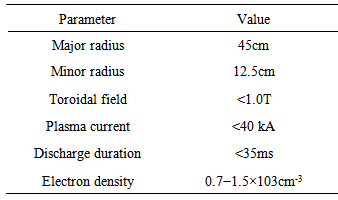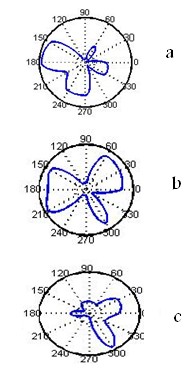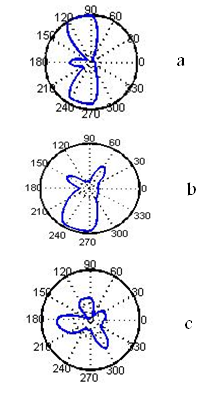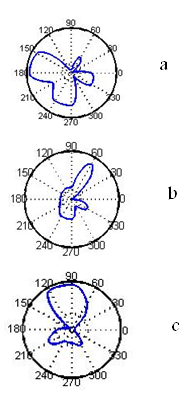-
Paper Information
- Next Paper
- Previous Paper
- Paper Submission
-
Journal Information
- About This Journal
- Editorial Board
- Current Issue
- Archive
- Author Guidelines
- Contact Us
Journal of Nuclear and Particle Physics
p-ISSN: 2167-6895 e-ISSN: 2167-6909
2014; 4(5): 142-146
doi:10.5923/j.jnpp.20140405.02
Determination of Tokamak Plasma Parameters and Plasma Modes Based on FFT Technique
H. Noor Mohamadigh, A. Salar Elahi, M. Ghoranneviss
Plasma Physics Research Center, Science and Research Branch, Islamic Azad University, Tehran, Iran
Correspondence to: A. Salar Elahi, Plasma Physics Research Center, Science and Research Branch, Islamic Azad University, Tehran, Iran.
| Email: |  |
Copyright © 2014 Scientific & Academic Publishing. All Rights Reserved.
In this article we presented effects of Resonant Helical Field (RHF) and hot limiter biasing on the basic plasma parameters and plasma modes in IR-T1 tokamak. For these purposes a hot limiter biasinging system were constructed and installed on outer surface of the IR-T1 tokamak, then the positive voltage applied to the limiter biasing, plasma modes and plasma parameters in the absence and presence of limiter were measured. Also the external RHF was applied on tokamak plasma and its effects on results were measured. Plasma modes were investigated by using the Fast Fourier Transform (FFT). Fourier analysis is suitable method for mode detection in tokamak. Results were compared and discussed.
Keywords: Tokamak, Hot limiter biasing, RHF, Plasma mode, Plasma parameters, Fast Fourier Transform
Cite this paper: H. Noor Mohamadigh, A. Salar Elahi, M. Ghoranneviss, Determination of Tokamak Plasma Parameters and Plasma Modes Based on FFT Technique, Journal of Nuclear and Particle Physics, Vol. 4 No. 5, 2014, pp. 142-146. doi: 10.5923/j.jnpp.20140405.02.
Article Outline
1. Introduction
- Plasma equilibrium is one of important problems in tokamaks experiments. One of the main challenges of tokamak plasma equilibrium studies is the discovery of basic parameters which effect on the plasma equilibrium states. With the control of plasma equilibrium, energy confinement time can be improved. As well as some of the plasma information like magneto hydrodynamics (MHD) instabilities can be deduced from these parameters. Also measurement of magnetic field fluctuation of plasma is important in study of plasma equilibrium [1-5]. In this paper we present study of effects of hot limiter biasing and resonant helical field (RHF) on plasma parameters and fluctuation of magnetic field around the IR-T1 tokamak chamber. For this purpose, we used the poloidal array of 12 external Mirnov coils, which is located poloidally by 30 degrees see Fig 1. We determined plasma mode numbers based on FFT [6-10]. The main diagnostics used in this investigation for measurement of plasma parameters are magnetic probe, a poloidal flux loop, Rogowski coil and a diamagnetic loop. In this investigation we used two methods for improvement of the plasma oscillations. Firstly we investigated plasma modes and plasma parameters in the absence of the hot limiter biasing and RHF, then we measure the effects of hot limiter biasing system on plasma modes and plasma parameters. Also we present an experimental investigation of effects of RHF on the plasma modes and plasma parameters, with RHF introducing of different modes of the RHF (L=2, L=3, L=2&3) [11-18]. In the next section “Design, Construction, and Experimental Set-up of Hot Limiter Biasing System” on IR-T1 will be presented. “Experimental Results and Effects of the Hot Limiter Biasing on the Plasma Modes and Plasma Parameters” will be presented in the section 3. “Resonant Helical Field Set-up on IR-T1 Tokamak and Experimental Results of Measurement of Plasma Modes and Plasma Parameters with RHF” will be presented in the section 4. Finally “Summary and Discussion “will be presented in the section 5.
 | Figure 1. Position of poloidally array of 12Mirnov coils |
2. Design, Construction, and Experimental Set-up of Hot Limiter Biasing System
- In this experiment hot biasing limiter position has been varied between 11.5 and 12.5 cm, and biasing applied between the limiter and the vessel. In fact the hot limiter biasing is an improved limiter biasing that it can be heated with the help of tungsten filament. Hot limiter biasing can emissive electron inside the plasma. The experiments were performed in hydrogen. An average plasma density was in the range
 , the toroidal magnetic field induction
, the toroidal magnetic field induction  , the plasma current
, the plasma current  see table 1. The position of poloidally array of 12 Mirnov coils is shown in the Fig. 1. The hot limiter biasing consists of a stainless steel circular head, 2mm in radial direction (width) and 2cm in poloidal direction as shown in the Fig 2.
see table 1. The position of poloidally array of 12 Mirnov coils is shown in the Fig. 1. The hot limiter biasing consists of a stainless steel circular head, 2mm in radial direction (width) and 2cm in poloidal direction as shown in the Fig 2.
|
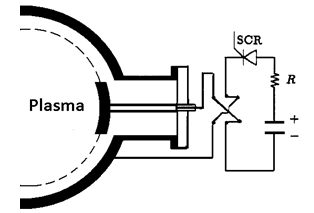 | Figure 2. Schematic drawing of the hot limiter biasing system |
3. Experimental Results and Effects of the Hot Limiter Biasing on the Plasma Modes and Plasma Parameters” in IR-T1 Tokamak
- In this section we presented the effects of the hot limiter biasing with positive voltage on the plasma modes, thereafter on fundamental plasma parameters like current plasma, loop voltage, beta poloidal and energy confinement time. As it is known tokamak plasma can support different modes. Cross section of plasma can have different shapes, which are designated as Roset and have M rose leaves. Mirnov coils can record current time series caused by poloidal rotation of plasma. We plotted the polar diagram of the magnetic field fluctuations using FFT analysis on the poloidal array of Mirnov coils (see Fig 3). In these diagrams we showed cross section of plasma at three-time interval in the absence of hot limiter biasing. First time window is during 20-21ms, that shows the mode number is (m=4), second interval is at 24-25ms that mode number is (m=3) and third interval is at 27-28ms that mode number is (m=4).
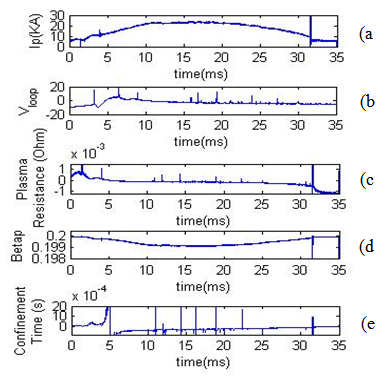 | Figure 5. (a) plasma current, (b) loop voltage, (c) plasma resistance, (d) poloidal beta, (e) energy confinement time without RHF and hot limiter biasing |
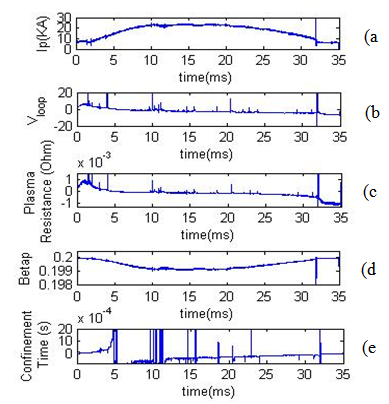 | Figure 6. (a) plasma current, (b) loop voltage, (c) plasma resistance, (d) poloidal beta, (e) energy confinement time in presence of hot limiter biasing |
4. Resonant Helical Field Setup on IR-T1 Tokamak and Results of Measurement of Plasma Modes and Plasma Parameters with RHF
- The RHF is an external magnetic field which can improve the tokamak plasma confinement. In the IR-T1, this field is produced by two winding with optimized geometry conductors wound externally around the tokamak chamber with a given helicity. The minor radius of these helical windings are 21 cm (L=2, n=1) and 22cm (L=3, n=1) and also major radius is 50 cm (see fig 6). In this experiment, the current through the helical windings was between 200 and 300A, which is very low compared with the plasma current (32KA).
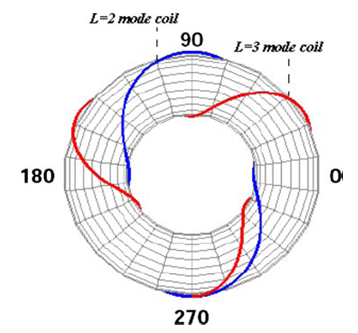 | Figure 7. Positions of the RHF coils (L=2 and L=3modes) on outer surface of the IR-T1 tokamak chamber |
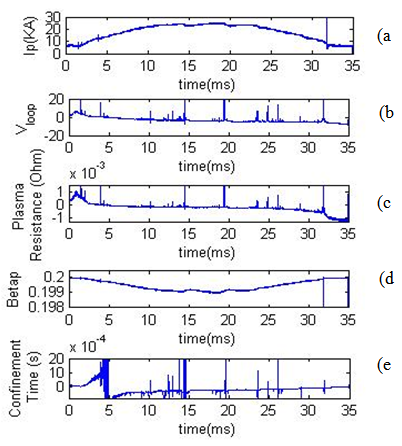 | Figure 11. (a) plasma current, (b) loop voltage, (c) plasma resistance, (d) poloidal beta, (e) energy confinement time in RHF (L=2) |
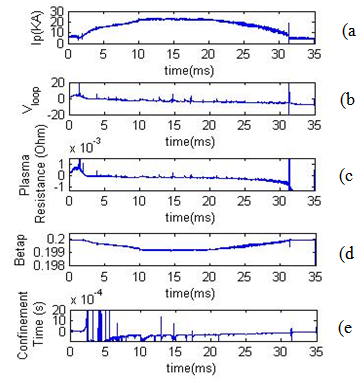 | Figure 12. (a) plasma current, (b) loop voltage, (c) plasma resistance, (d) poloidal beta, (e) energy confinement time in RHF (L=3) |
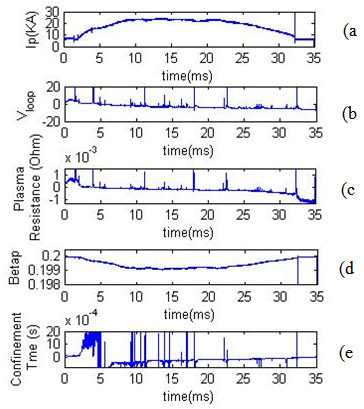 | Figure 13. (a) plasma current, (b) loop voltage, (c) plasma resistance, (d) poloidal beta, (e) energy confinement time in RHF (L=2&3) |
5. Summary and Discussion
- In this paper we presented the effects of emissive limiter biasing and RHF on the plasma modes and plasma parameters. For this purpose a hot limiter biasing constructed and installed on the IR-T1 tokamak and then the positive voltage applied to limiter inserted inside the tokamak, and modes number of plasma and plasma parameters in the absence and presence of hot limiter biasing were measured. We plotted the polar diagram of the magnetic field fluctuations using FFT analysis on the poloidal array of Mirnov coils. Also we investigate the effects of RHF on the modes number and plasma parameters we measured it, with introducing of different modes of the RHF (L=2, L=3, L=2&3). Results show that hot limiter biasing and RHF with can decrease the plasma fluctuations consequently mode number decrease and plasma parameters improvement.
 Abstract
Abstract Reference
Reference Full-Text PDF
Full-Text PDF Full-text HTML
Full-text HTML